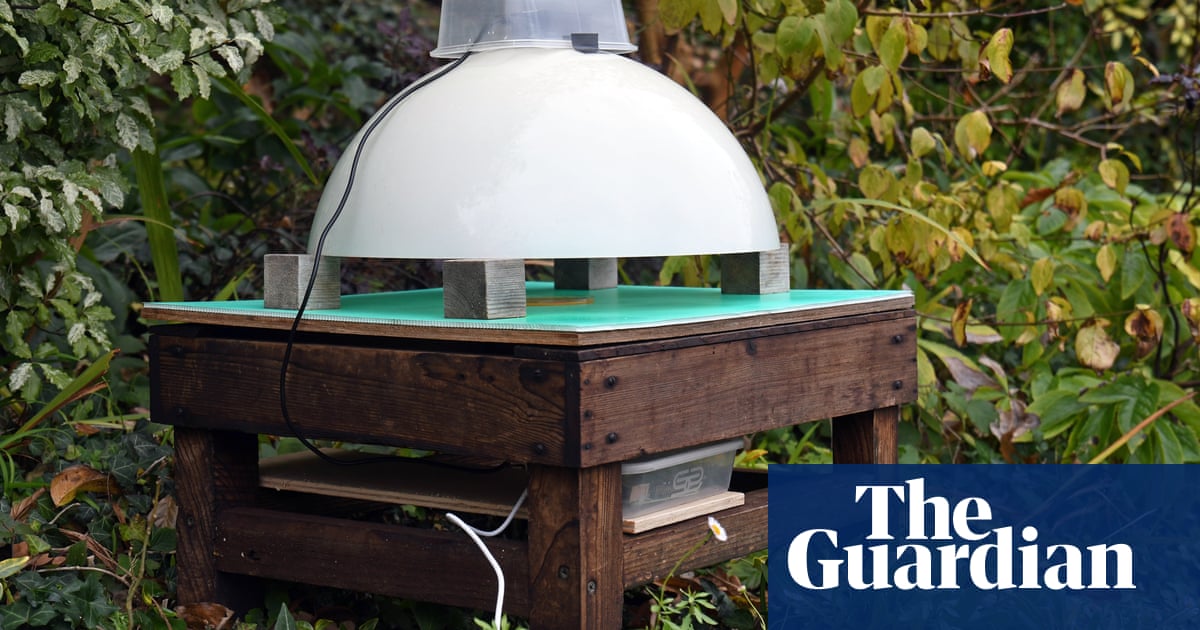An early warning system designed to track and trace predatory Asian hornets using artificial intelligence has been unveiled by experts from a British university.
Researchers from the University of Exeter have invented a system that draws hornets to a monitoring station. They land on a sponge cloth impregnated with food and an overhead camera captures images.
AI establishes if they are Asian hornets, which are an existential threat to the UK’s bees. If they are Asian hornets, it sends an alert to the operator’s phone or computer.
Once the hornet has discovered an apparently safe food source they are likely to return and a team will be able to track the Asian hornet back to its nest.
Asian hornets (Vespa velutina) have already invaded much of mainland Europe and last month it emerged that they may have become established in the UK after the earliest-ever sighting of the insect was recorded.
They sit outside honeybee hives and capture bees as they enter and exit. Just one Asian hornet can hunt down and eat 30 to 50 honeybees in a day.
The invention by the Exeter researchers, named VespAI, could be a gamechanger as it is crucial to spot the arrival of Asian hornets to an area early before new queens are produced as once they are established it is almost impossible to get rid of them. The aim is to keep the cost of components below £100 so the device can be widely used.
“Our goal was to develop something cost-effective and versatile, so anyone – from governments to individual beekeepers – could use it,” said Thomas O’Shea-Wheller, of the Environment and Sustainability Institute at the university’s Penryn campus in Cornwall. “This study tested a prototype version, and the results were encouraging.”
At present, the UK response strategy depends on people seeing, identifying and reporting Asian hornets but the vast majority turn out to be cases of mistaken identity. Typically, fewer than 1% of suspected Asian hornet sightings prove to be correct.
VespAI uses a compact processor – in effect a small computer – to operate, and remains dormant unless its sensors identify an insect within the size range of a hornet.
If this happens, the system’s AI algorithm activates, analysing the image to determine if it is an Asian hornet. If an Asian hornet is detected, the monitor sends an alert to the user.
Dr Peter Kennedy, who worked on the project, said: “The majority of reports submitted are misidentified native species, meaning the agencies have to manually validate thousands of images every year.
“In some parts of Europe, detection relies on hornet trapping – but such traps kill a lot of native insects, and do little to impact Asian hornet numbers. VespAI ensures that live hornets can be tracked back to the nest, which is the only effective way to destroy them.”
Tracking teams can find the nest by watching which way they fly off. Repeating this from other nearby spots allows the likely location of the nest to be estimated by triangulation.
The system was tested on the island of Jersey, which experiences high numbers of Asian hornet incursions. Thousands of images of Asian hornets and other insects were collected and the AI learned to identify Asian hornets, based on colouration, size, and morphology.
This year, the team will begin deploying additional prototypes in collaboration with the UK government, the National Bee Unit, the British Beekeepers Association and the company Vita Bee Health.
A paper on the device, titled “VespAI: a deep learning-based system for the detection of invasive hornets”, is published in the journal Communications Biology.












